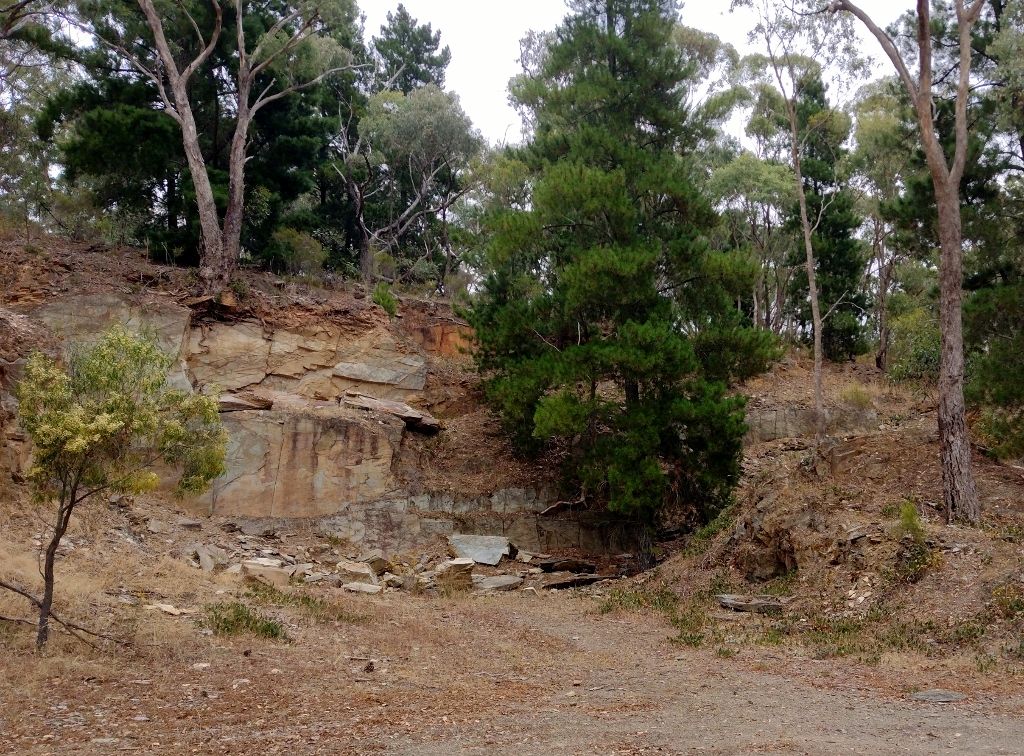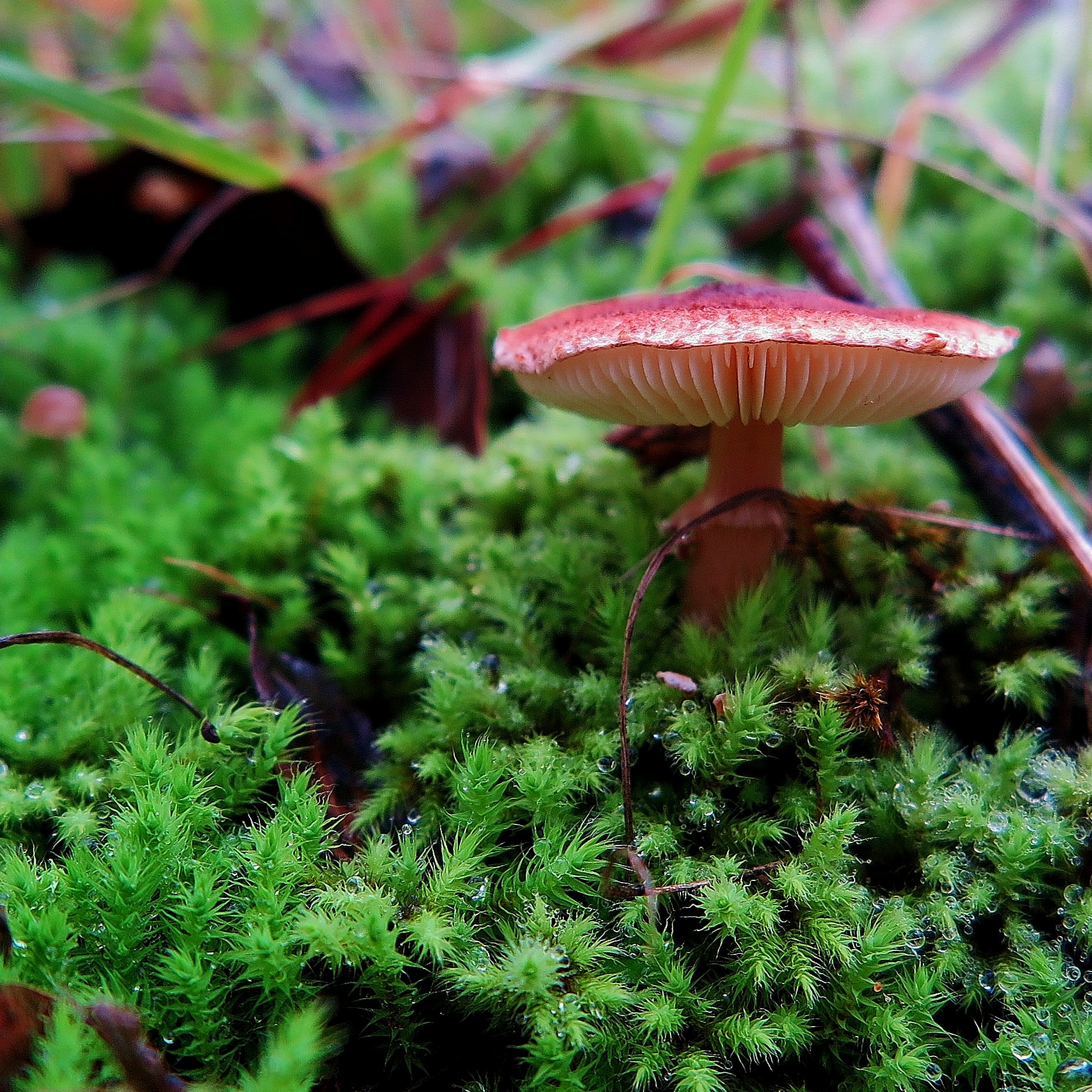There are some disappointing features in these notes, probably typical of heritage discourse generally. A few examples:
–The Quartz Hill walk notes describe puddling wheels, but somehow forget to point out that these were seriously polluting. Captain Bull tried unsuccessfully to get them banned in 1855.

Near the Nimrod mine: A eucalypt perches precariously on the impressive slate wall; feral pines are invading from the plantations; a small flowering Acacia implexa softens the scene on the left; impressive patches of Purple Coral-pea are covering the bare earth. The mining landscape has many layers: ‘heritage’ notes which concentrate on technical details about mining fail to catch the reality of a changing landscape.
–When you compare the detail given to mining techniques, not enough is made of the Pennyweight Flat children’s cemetery. This is where environmental degradation runs crash into human life, and the result is seriously haunting. A feature of this location is the fine Grey Box trees, somehow framing the devastating reality below.
–the notes on sluicing are extraordinarily bland. The long term effect on our waterways was disastrous. How hard is it to say this?
— there’s a pleasant ‘goldfields treasure hunt’ sheet for ‘Junior Rangers’: participants are invited to search for 16 goldfields features. Apart from ‘coppiced trees’, all features are shafts, chimneys, and so on. We’d like to have seen, in addition, perhaps, ‘Native cherry’. Or even ‘destroyed waterway.’ There are plenty on offer.





 Click on image for info/order page
Click on image for info/order page Click on image for info/order page
Click on image for info/order page Click on image for info/order page
Click on image for info/order page




















